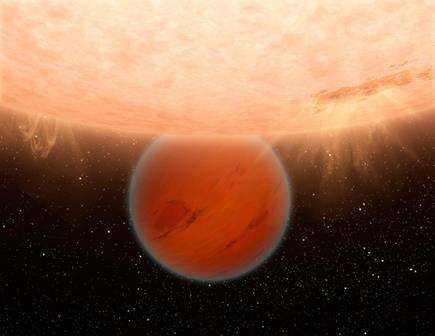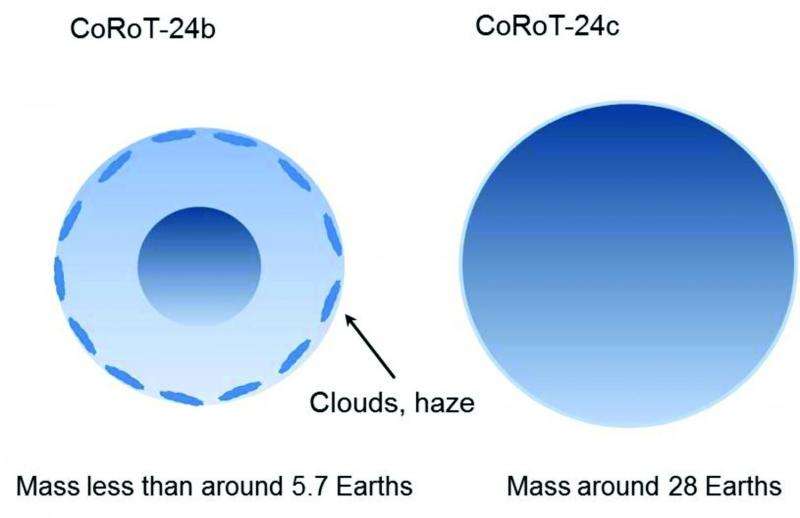Small planets hiding in giant cloaks

Hazes and clouds high up in the atmospheres of exoplanets may make them appear bigger than they really are, according to new research by astronomers at the Space Research Institute (IWF) of the Austrian Academy of Sciences. The team, led by researcher Dr Helmut Lammer, publish their results in a letter to Monthly Notices of the Royal Astronomical Society.
Since the first confirmed discovery in 1993, astronomers have found more than 3,000 planets in orbit around stars other than our Sun. A key goal now is to characterise known worlds by mass, size and composition, to better understand the evolution of planetary systems, and the prospects for 'Earthlike' planets that might support life.
In 2014 Lammer and his team used the European Space Agency (ESA) CoRoT space telescope to study the upper atmosphere of two low-mass planets that are regularly seen to pass in front of (transit) the star they orbit. The two planets orbit their star in 5 and 12 days, appear to be around 4 and 5 times the diameter of the Earth, and have respective masses of less than 6, and 28 times Earth. The outer, more massive planet, CoRoT-24c, is similar in mass to Neptune. In contrast, the inner planet, CoRoT-24b, is less than a quarter as massive, but is similar in size, so seems to have a very low density.
With such short orbits, both worlds are close to and will experience dramatic heating from the star. The team modelled this and found that the lower mass planet would see its atmosphere evaporate within 100 million years, if it really is as big as suggested. But the star is billions of years old, so the planet should have lost its atmosphere long ago.

he solution seems to be that the planet is only about half as big as thought. Lammer argues that an extended, very thin, atmosphere, surrounds a relatively compact planet, but has high altitude features that confuse observations. He explains: "The radius is based on what we see when the planet makes its transit. This is probably distorted by clouds and haze high in the atmosphere, in a region where atmospheric pressure is otherwise very low."
Co-author Luca Fosseti adds that this effect needs to be considered by future exoplanet missions, like the ESA CHaracterising ExOPlanets Satellite (CHEOPS) mission due to launch in December 2017. Results for some worlds found by the NASA Kepler observatory may also need to be re-evaluated.
"Our results show that CHEOPS scientists need to be cautious about their first measurements", says Fossati.
"Since Kepler has also discovered several similar low-density and low-mass planets, it is very likely that the size measured for many of them also differ from the true value, so there could be a bias in the results."
If the Austrian team are right, this has dramatic implications, for example in the studies of planet populations and how the mass of planets relate to their size.
More information: "Identifying the "true" radius of the hot sub-Neptune CoRoT-24b by mass loss modelling", H. Lammer, N.V. Erkaev, L. Fossati, I. Juvan, P. Odert, E. Cubillos, E. Guenther, K.G. Kislyakova, T. Lüftinger, M. Güdel, Monthly Notices of the Royal Astronomical Society, in press. mnrasl.oxfordjournals.org/cont … rasl.slw095.abstract
Journal information: Monthly Notices of the Royal Astronomical Society
Provided by Royal Astronomical Society




















